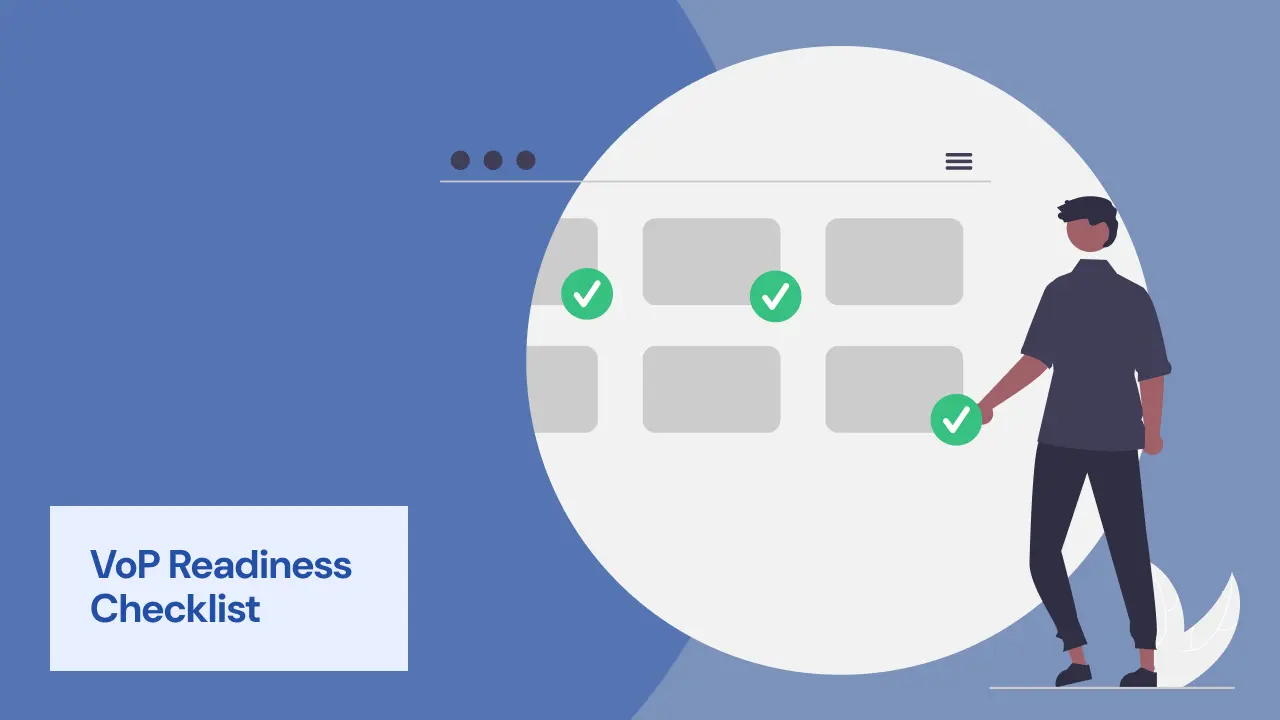VoP Readiness Checklist: Are You Technically and Operationally Prepared?

VoP Readiness Checklist: Are You Technically and Operationally Prepared?
October 2025 isn’t just another regulatory deadline — it’s the line that separates VoP-compliant PSPs from those facing potential sanctions. The EU Instant Payments Regulation makes Verification of Payee mandatory, and the clock is ticking on ART self-certification.
Banks and PSPs across Europe have started their internal preparation. But VoP readiness goes beyond checking technical boxes. You need operational alignment, risk frameworks, and customer experience that doesn’t break under regulatory weight.
Here’s your comprehensive readiness assessment.
Technical Integration: The Foundation
Core Infrastructure Requirements
✓ Architecture Decision Made Have you settled on cloud-native, on-premise, or hybrid deployment? Each comes with distinct compliance implications and integration complexity.
✓ Real-Time Processing Capability Your infrastructure must handle sub-2-second API responses for VoP requests. Batch processing won’t cut it for instant payments.
✓ Secure Authentication Implemented mTLS and QWAC certificates aren’t optional. Your VoP endpoints need bank-grade security from day one.
✓ Monitoring and Logging Architecture SLA tracking, auditability logs, and performance monitoring must be built into your system — not bolted on later.
Integration Reality Check: Most PSPs underestimate the complexity of real-time name matching across 27 SEPA countries. Different character sets, name conventions, and data quality standards create integration challenges that surface only during testing.
API and Data Management
✓ EPC Specification Compliance Your API implementation must align with EPC VoP Scheme Rulebook v1.0. Partial compliance creates audit risks.
✓ Data Retention Policies Defined VoP logs, decision trees, and audit trails require clear retention schedules that satisfy both GDPR and regulatory requirements.
✓ Error Handling and Fallback Procedures What happens when VoP fails? Your system needs graceful degradation that doesn’t break payment flows.
Operational Preparedness: Beyond Technology
Process Integration
✓ Exception Handling Workflows Close matches and no-matches require human review processes. Have you defined escalation procedures and decision criteria?
✓ Staff Training Completed Your support team will field VoP-related queries from customers. They need to understand matching logic, not just forward tickets.
✓ Payment Operations Alignment B2B transfers often have different timing expectations than consumer payments. Your operations team needs clear guidance on VoP-related delays.
Operations Gap Analysis: Many PSPs focus on technical integration while overlooking operational readiness. When customers call about payment delays due to VoP checks, your first-line support becomes your compliance frontline.
Customer Experience Strategy
✓ UI/UX for Match Outcomes Green checks, amber warnings, red flags — your interface needs intuitive visual language that builds trust rather than confusion.
✓ Customer Journey Testing Have you tested payment flows with actual VoP responses? Edge cases often reveal UX problems that impact customer satisfaction.
✓ Error Communication Strategy “Payment verification failed” tells customers nothing useful. Clear, actionable error messages reduce support burden and improve completion rates.
Compliance and Risk Management
Regulatory Alignment
✓ Risk Assessment Completed VoP introduces new failure points and customer friction. Your risk framework needs updating to account for these changes.
✓ Due Diligence Documentation In fraud disputes, you’ll need to demonstrate reasonable verification measures. Your VoP implementation becomes part of your defense strategy.
✓ Fraud Monitoring Integration VoP alerts should flow into your existing fraud dashboard, not create parallel monitoring systems.
Audit Preparedness
✓ ART Self-Certification Readiness The Adherence Reporting Tool isn’t just paperwork — it’s ongoing compliance demonstration. Your systems need to generate the required evidence.
✓ Regulatory Change Tracking SEPA regulations evolve. You need processes to track and implement updates without breaking existing integrations.
Compliance Reality: VoP isn’t a standalone compliance requirement. It intersects with PSD2, GDPR, and AML obligations. Siloed implementation creates gaps that auditors will find.
Vendor and Technology Assessment
Provider Due Diligence
✓ ART-Ready Certification Not all VoP providers offer full ART support. Verify your vendor’s certification status and reporting capabilities.
✓ SLA Guarantees and Monitoring Uptime commitments, response time guarantees, and escalation procedures need contractual backing, not just marketing promises.
✓ Matching Logic Transparency Black-box name matching creates audit risks. You need explainable algorithms and configurable sensitivity settings.
✓ Scalability and Performance Testing Your VoP solution needs to handle peak payment volumes without degrading performance or increasing error rates.
Integration Support
✓ Technical Documentation Quality Comprehensive API docs, integration guides, and troubleshooting resources reduce implementation time and ongoing support costs.
✓ Sandbox Environment Access Testing with production-like data and scenarios prevents surprises during go-live.
✓ Ongoing Support Structure Post-implementation support quality often determines long-term success. Evaluate response times and expertise levels.
Pre-Launch Verification
Testing and Validation
✓ End-to-End Payment Flow Testing Test complete customer journeys with various VoP outcomes. Edge cases often reveal integration problems.
✓ Performance Under Load VoP requests add latency to payment processing. Validate performance under realistic transaction volumes.
✓ Fallback Scenario Testing What happens when VoP services are unavailable? Your fallback procedures need testing, not just documentation.
Stakeholder Alignment
✓ Cross-Department Communication Tech, ops, compliance, and customer service teams need aligned understanding of VoP implications and procedures.
✓ Customer Communication Strategy How will you explain VoP delays or failures to customers? Proactive communication reduces support burden.
The Path Forward
VoP readiness isn’t binary — it’s a maturity spectrum. PSPs with comprehensive preparation will gain competitive advantage through smoother customer experiences and operational efficiency.
The October 2025 deadline is firm, but the quality of your implementation determines long-term success. Rushed deployment creates technical debt and operational friction that compounds over time.
Next Steps:
- Assess your current state against this checklist
- Identify critical gaps in technical and operational readiness
- Prioritize implementation based on regulatory requirements and business impact
- Plan comprehensive testing with realistic scenarios and data
- Prepare ongoing compliance processes for post-launch requirements
Your VoP implementation becomes part of your payment infrastructure for years to come. Invest the time to build it right.
Need VoP Implementation Support?
CheckPayee provides SEPA-compliant VoP solutions designed for rapid deployment without operational disruption. Our certified RVM platform handles routing, verification, and ART reporting — letting you focus on your core business.
Contact us to discuss your VoP readiness timeline and requirements.